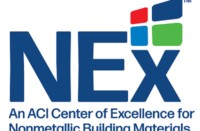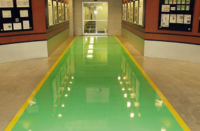Lafarge North America is making a strong contribution to building more durable, better-connected cities with innovative blended cement mix designs to achieve the goals of high strength, resiliency and extended service life for the new signature Tappan Zee Bridge — the largest bridge construction project in New York history.
The bridge’s landmark design has already received international acclaim for its unique and pleasingly lit angled main-span towers. The visually striking, 3.1-mile twin-span Hudson River crossing—which replaces the Tappan Zee Bridge built in 1955—will be one of the widest cable-stayed structures of its kind in the world. It will comprise eight traffic lanes, four breakdown lanes, a bicycle and pedestrian lane, and state-of-the-art traffic-monitoring systems, as well as bus rapid transit and commuter-rail trains. Lafarge blended cements play a crucial role in constructing the colossal new bridge, as more than 300,000 cubic yards of high-performance concrete will be used.
The project required the crossing’s primary structural components (foundations, substructures, superstructures and bridge decks) to provide a 100-year service life before needing major maintenance. This dictated the use of materials with proven long-term performance characteristics. To meet these stringent requirements for the substructure, Lafarge collaborated with engineers from Tappan Zee Constructors LLC, to conduct sophisticated life cycle analysis and testing of different high-slag content mix recipes with numerous aggregates and admixture combinations. The analysis in Lafarge’s concrete testing laboratory over several months included tests for compressive strength, permeability, durability, flowability, shrinkage, slump and consistency.
Primary considerations in selecting the optimum concrete mix formulation for the bridge towers, piles, columns, caps and piers were strength, long-term durability, low heat of hydration, and excellent ASR mitigation and sulfate resistance. To achieve these performance goals, the team decided on a high-performance concrete containing a 64%/36% mix of NewCem slag cement and Portland Type I/II cement. Engineered for long-term durability, NewCem slag cement helps structures achieve greater strength potential, reduced permeability, and increased resistance to sulfate attack and alkali silica reaction. High replacement levels of slag cement in properly proportioned mixes also help control shrinkage, creep and thermal cracking in mass concrete structures.
The full bridge is supported by 86 piers, most of which bolster the long approaches (encompassing about 2 million square feet) to the bridge’s main span. To meet the challenges of the approach spans over the river, their driving surface comprises nearly 6,000 precast deck segments of high-performance concrete containing Lafarge’s high-performance SF blended cement. This Portland-silica fume cement blend produces concrete with a significantly higher compressive strength than normal concrete and is recommended for structures exposed to seawater, chloride ions, deicing salts and chemical attack. For the crossing’s main spans, approximately 1,000 precast concrete deck panels containing Lafarge Portland I/II cement will serve as the roadway. When fully installed, the concrete deck panels for the approaches and main span will comprise a surface area of 65 acres and meet the project’s required 100-year service life without major maintenance.













